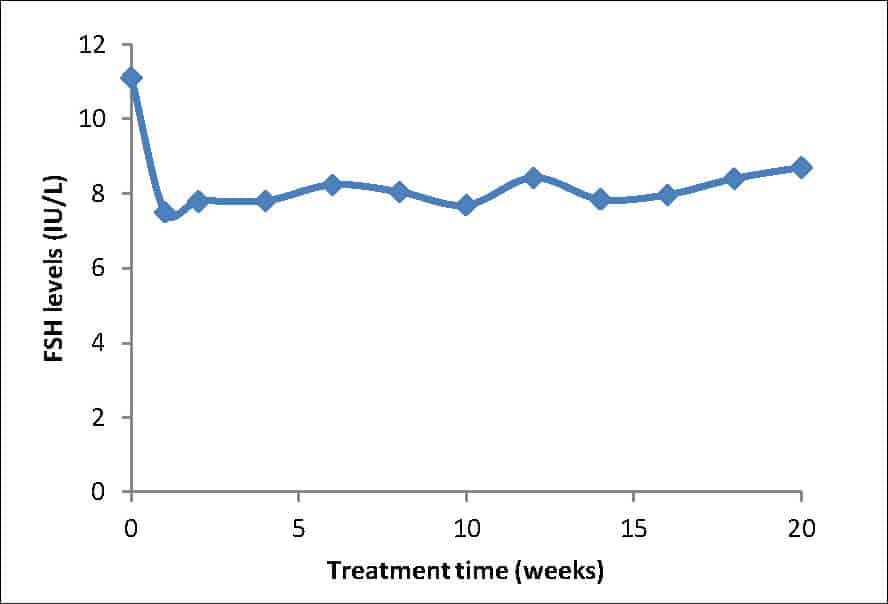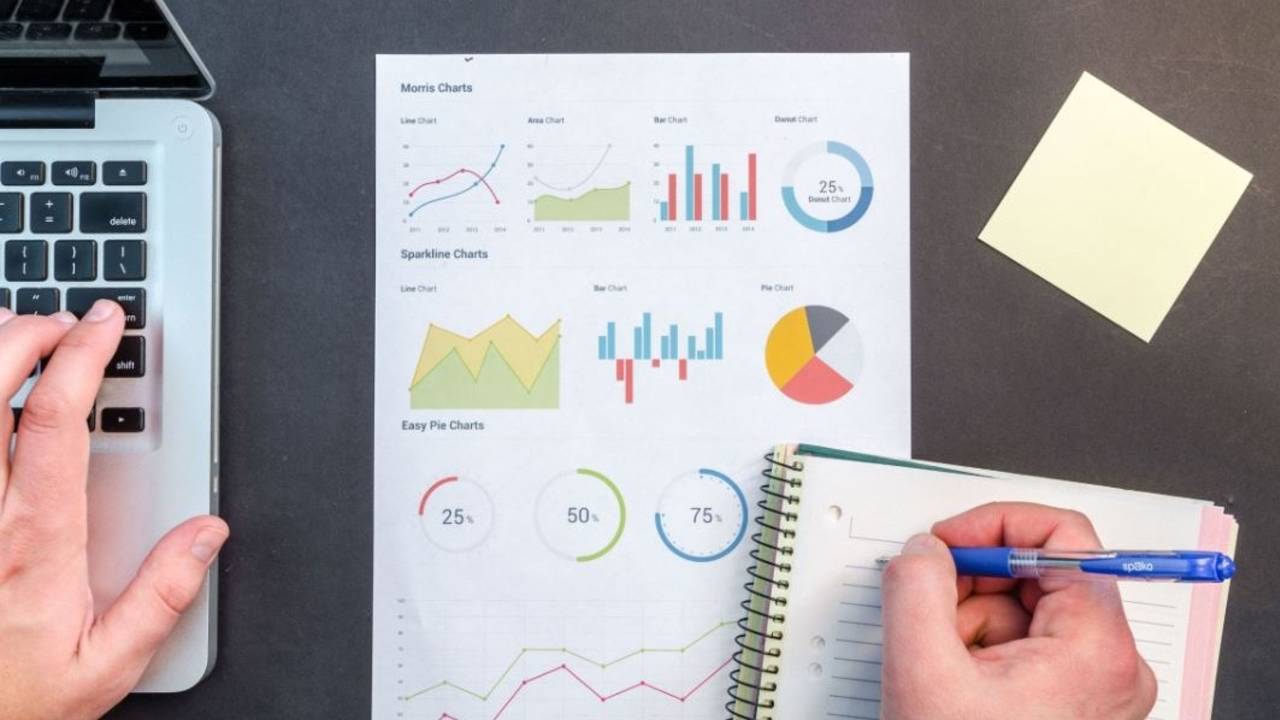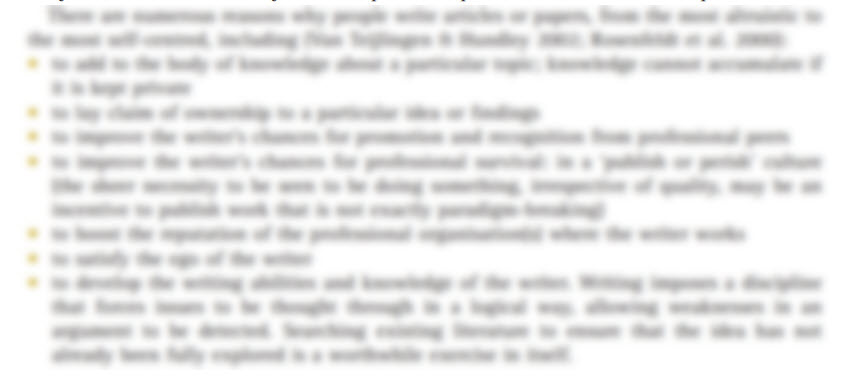
Figure 1: A line graph conveying a simple relationship between two variables. In this case, the variation of a measured hormone over time.
What is a figure?
Figures visually present information that cannot be clearly explained as written text or presented in a table. Figures can include graphs, flow charts, photographs, maps, illustrations, micrographs and diagrams. They can be simple; for example, a one-line graph that conveys a simple relationship between an x and y variable (see Figure 1), or they can contain multiple components, such as a graph, a diagram, a micrograph or photograph (see Figure 2). Figures have labelled components and a figure legend that clearly describes these components and summarises the key features.
Planning your figure
As with tables, figures help the reader understand what you have found: for example, key observations, statistically significant results, expected or unexpected trends in the data or any matter that needs further explanation. Figure design occurs after the data has been analysed and the main findings are apparent. The figures are usually presented in a results section and discussed in relation to your research question or problem statement that was raised in your introduction. What figures you present also depends upon whether you are writing a report, journal article or thesis. A report can have a multitude of figures, while journal articles usually have strict page limits that force firm decisions on the number that can be included. Usually, there is more leeway for additional figures in a thesis.
When deciding how to place figures, prepare a mock layout to work out where each component will go, either by drawing boxes on paper or by printing draft versions of what you expect the final version to look like. Will the figure take up one column or will it be a large multi-panelled figure that takes up two columns of a journal or one entire page of a thesis? (Figure 3)
Preparing figures for journal publication
If you are preparing figures for journal publication, it is essential to first check the publisher’s requirements. Most journals have strict and detailed instructions with specific criteria: for example, image size, file type, resolution, colour space (e.g. RGB) and font types. If these criteria are not followed exactly, your publication may be returned by the editor for further changes.
Turning your raw data into a published figure: stay true to your data
Scientists are ethically bound to present their data truthfully and transparently. As a scientist, it is your responsibility to ensure that your figures accurately convey your original data and observations. In addition, universities and research centres must comply with the Australian Code for the Responsible Conduct of Research. As you manipulate your raw data into graphs and prepare your images for publication, your raw data is inevitably transformed in some way; even simple line graphs are a transformation of a set of experimental values. Photo-editing programs can also transform digital images by re-sampling (see fact sheet: Preparation of figures as digital images), which could result in an image that is different to the original.

Figure 3: Consider whether your figures are small enough to fit in one column to save space; larger figures may require two columns.
When preparing figures for publication in any form, it is important that you adhere to your organisation’s requirements for transparency and peer review. How you manipulated your raw data into the published figure must be transparent and repeatable. For example, does your final, published image look like the fluorescently-labelled image you saw down the microscope? Is the photo one actually taken of your study subject and not another one similar to yours? Does your graph accurately explain the data, or have you left out some aspects of the data and inadvertently misrepresented your original findings? Make sure you save your files at each step of the transformation from raw data into a final published figure, and keep the files together in one folder.
What software do I use?
First, establish what software is freely available to you via your university or organisation. Graphs and charts can be drawn in Excel and in a variety of statistical programs. CorelDraw or Adobe Photoshop and Illustrator are often recommended by publishers to draw diagrams, and to compile your images, graphs and diagrams into a publication-quality figure.
If looking to use free software, open-source software is often a good choice as it is completely free and is supported by an online community that engages in ongoing support and development. For example, freemind software for mind-mapping and Gimp for photo and image manipulation, and see Wikipedia for software listing for graphic software.
Microsoft Powerpoint is often readily accessible and can be useful for drawing or compiling diagrams. Set the page layout to A4 portrait and add all components, using alignment tools and rulers to align panels and text. However, Powerpoint only exports lower resolution files for monitors, rather than higher resolution required for printing. A way around this is to print the Powerpoint file to a pdf (using Adobe Acrobat Professional) and select High-Quality Print (300 dpi) in “Preferences”. The resulting pdf file can then be cropped and saved as a TIF file with a 300dpi resolution (use either Adobe Acrobat or Photoshop to crop and save as a TIF).
The essentials of a good figure
Once you have created the figure, check the following criteria:
- Does it look good when printed on paper? Can all the features of each different components be clearly seen?
- Are the labels clear and specific?
- Is the resolution of the final assembled figure appropriate?
- Does the legend title convey the key finding?
- Do the details in the legend adequately explain all of the components?
- Is the figure referred to at the appropriate places in the results section? Does the figure accurately convey what is written in the results?
- Ask a colleague to proofread and check the clarity of your figure. Can they understand the overall message? Do they understand what the different components are?
© Dr Liza O'Donnell & Dr Marina Hurley
Any suggestions or comments please email admin@writingclearscience.com.au
Find out more about our new online course...
Now includes feedback on your writing Learn more...
SUBSCRIBE to the Writing Clear Science Newsletter
to keep informed about our latest blogs, webinars and writing courses.



